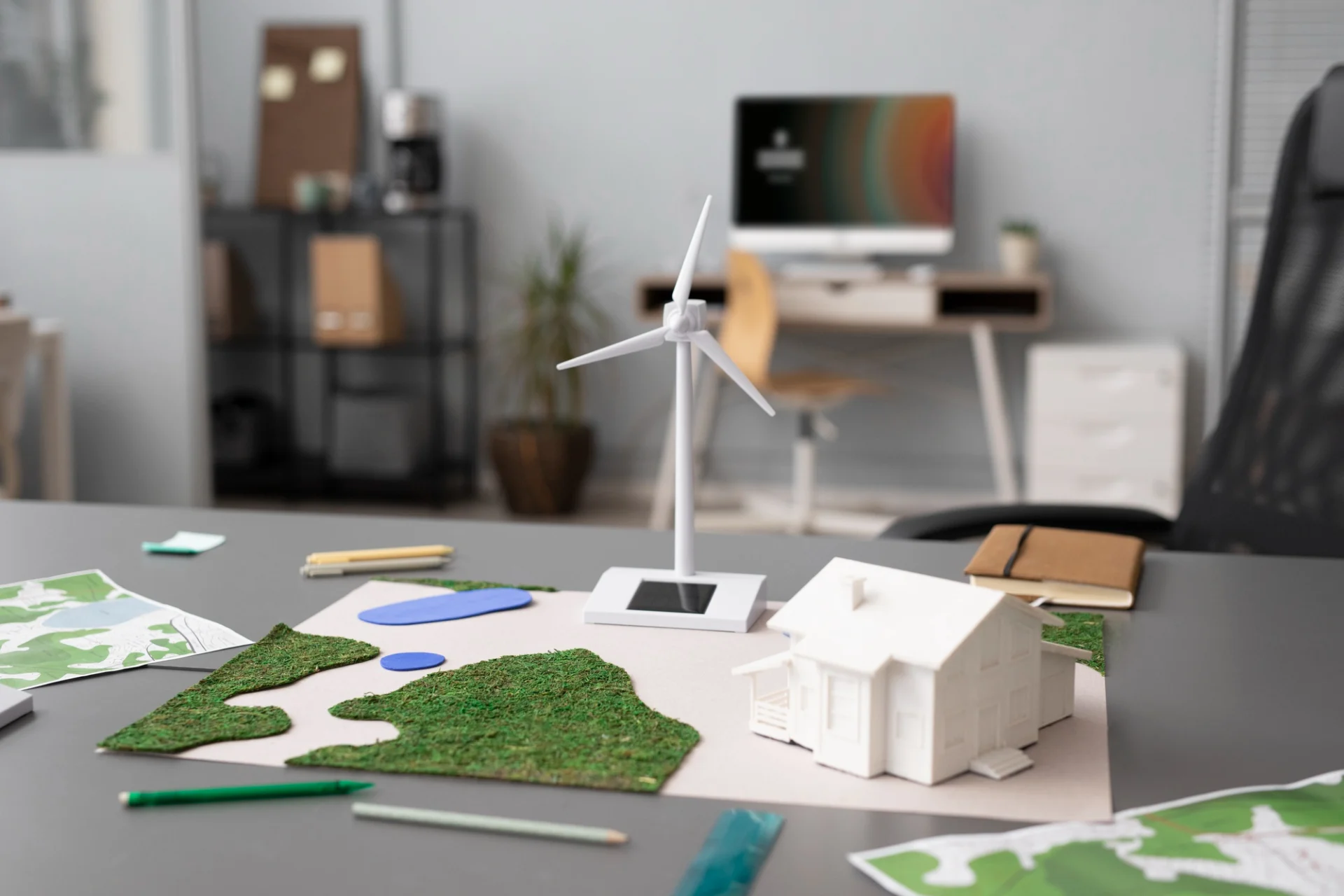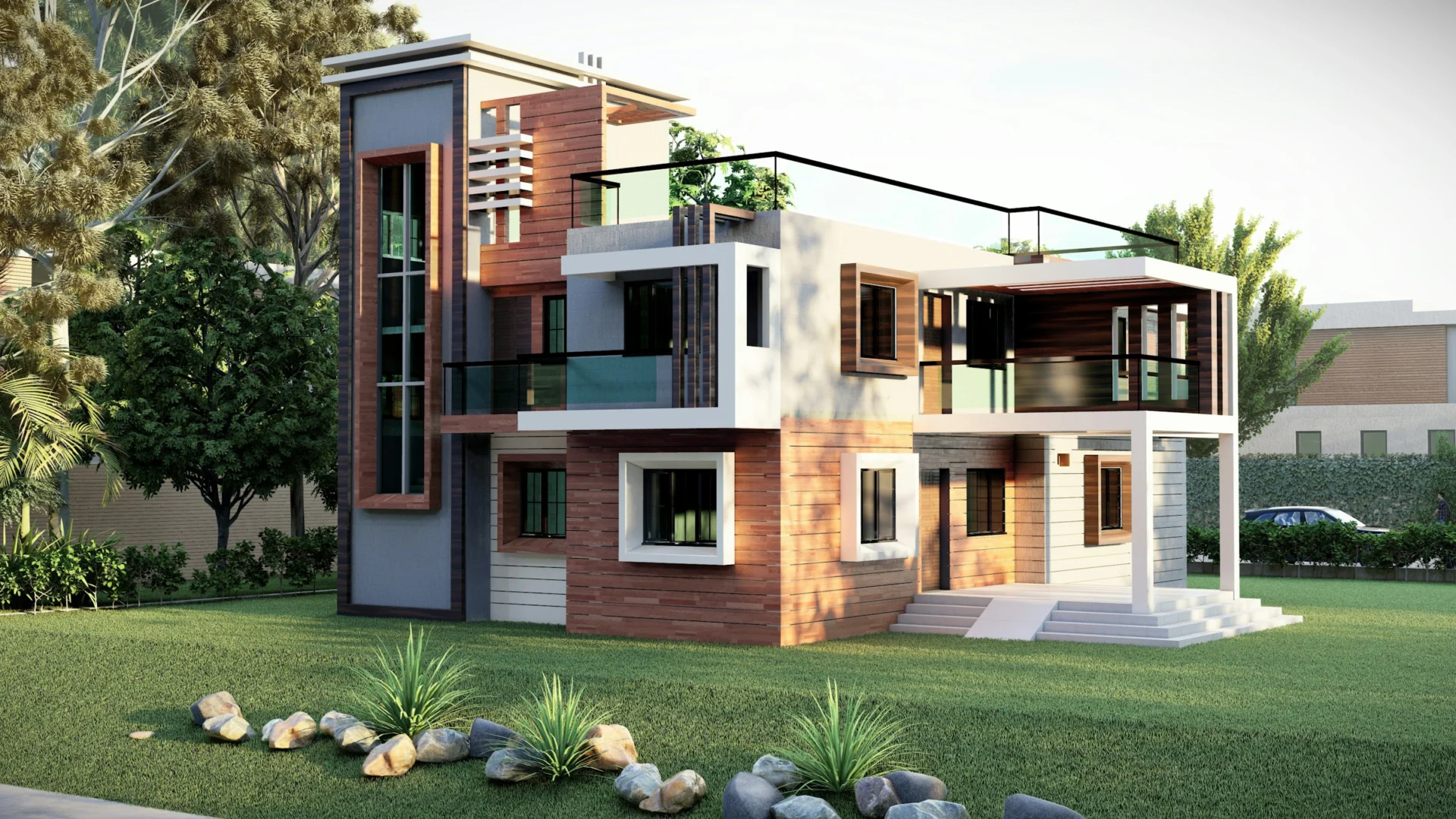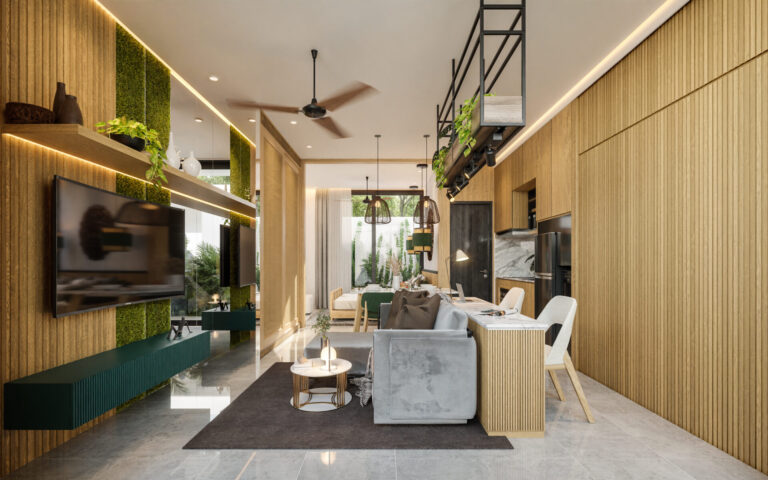
In Bali, sustainability is no longer optional, it is a necessity. Given the island’s delicate ecosystem, rapid tourism development, and mounting climate concerns, every building decision has a long-term impact.
No matter what type of building you are planning, whether it is a private villa, boutique resort, or dream home, choosing the right eco friendly building materials can dramatically reduce your carbon footprint while enhancing comfort and value.
In this guide, Manon explains some of the most effective and sustainable building materials currently used in Bali.
Why Eco Friendly Materials Matter in Bali’s Architecture?
Bali’s architecture is deeply rooted in nature and community, and it is more than just aesthetic. Using eco friendly building materials helps preserve this harmony while addressing modern environmental concerns.
Lower carbon emissions
Using sustainable materials reduces greenhouse gases during manufacturing, transport, and construction.
Climate-Adaptive Performance
Materials like bamboo, clay, and hempcrete regulate temperature and humidity, which is perfect for Bali’s tropical climate.
Cost-Effective in the Long Run
Though some options may have higher upfront costs, they often reduce energy bills, maintenance costs, and the need for replacements over time.
Spiritual and Cultural Synergy
Traditional Balinese design values a deep respect for nature. Eco-friendly choices honor that ethos while embracing innovation.
Also read: Bali Architecture in the Era of Sustainability: Designing Buildings in Harmony with Nature
Top Eco Friendly Building Materials to Consider
Looking to build or renovate with sustainability in mind? Choosing the right materials is a crucial first step. In this guide, we explore the top eco friendly building materials that not only reduce your environmental impact but also offer durability, beauty, and long-term savings.
1. Bamboo
Bamboo stands out as one of the most iconic eco friendly building materials in tropical architecture. In Bali, it grows quickly and abundantly, making it a smart and sustainable alternative to traditional hardwoods.
Beyond its environmental benefits, bamboo is incredibly strong and flexible, perfect for structures in earthquake-prone areas. Whether used for framing, flooring, furniture, or decorative touches, bamboo brings a warm, organic feel to any space while staying kind to the planet.
2. Reclaimed Wood
Reclaimed wood is a timeless choice among eco friendly building materials, offering both character and conscience. Rather than harvesting fresh timber, it repurposes materials from old boats, antique furniture, and heritage buildings, giving them a new story to tell.
This aged wood adds a rich, rustic texture to interiors while reducing the demand on forests. Perfect for beams, wall panels, flooring, and custom furniture, reclaimed wood adds warmth, sustainability, and a touch of history to any home.
3. Rammed Earth
Rammed earth construction, an ancient technique, is making a strong comeback in today’s eco-conscious designs.
As one of the most sustainable eco friendly building materials, it offers natural insulation that helps regulate Bali’s tropical heat and humidity. Its dense walls absorb and release warmth slowly, maintaining a comfortable interior temperature without heavy reliance on air conditioning.
With its raw, earthy aesthetic and minimal use of cement, rammed earth brings both beauty and environmental efficiency to modern tropical homes.
4. Recycled Steel

Sustainability and strength go hand in hand with recycled steel. Recycled steel is one of the most robust eco friendly building materials. It offers unmatched durability while significantly lowering the demand for new raw materials.
By repurposing scrap metal into structural frames, builders can reduce their environmental impact without compromising safety or style. In a modern tropical home, recycled steel is the perfect backbone: resilient against the elements and aligned with green building values.
5. Hempcrete
A rising star among eco friendly building materials, hempcrete offers a breathable and natural alternative to conventional concrete.
Made from a mix of hemp fibers, lime, and water, this material is not only lightweight but also highly resistant to pests, mold, and rot, making it perfect for Bali’s tropical humidity.
Hempcrete provides excellent wall insulation while giving interiors a warm, rustic charm that aligns beautifully with sustainable design principles.
6. Terracotta and Natural Clay
For centuries, eco friendly building materials like earth-based clay have been trusted to cool homes naturally in warm climates.
Used in everything from bricks and roof tiles to plaster finishes and floor tiles, clay is breathable, non-toxic, and energy-efficient to produce.
Its natural thermal properties help regulate indoor temperatures while adding a grounded, organic texture that brings warmth and character to any space.
7. Green Roof Systems
Green roofs are an innovative way to bring nature to your rooftop using eco friendly building materials. These living plant systems act as natural insulators, helping to regulate indoor temperatures and reduce the need for air conditioning.
Green roofs also absorb rainwater, minimizing runoff and helping to cool the surrounding environment. This makes them especially beneficial in tropical urban settings. Additionally, green roofs support biodiversity, making them a smart choice for eco-resorts and sustainable private villas.
Also read: How Sustainable Architecture Transforms Building Plans
8. Low-VOC Paints & Finishes
What’s in your wall paint matters more than you might think. Choosing eco friendly building materials like low-VOC (Volatile Organic Compounds) paint can significantly improve indoor air quality.
These safer alternatives reduce harmful emissions, creating a healthier space for both homeowners and construction workers. They're also kinder to the environment, minimizing pollution during production and application.
The good news? Bali now has a growing number of suppliers offering stylish, sustainable paint options that don’t compromise on color or performance.
How to Choose the Right Materials for Your Bali Project

Finding the perfect combination of design, function, and sustainability takes thoughtful planning. Here are key points to guide your selection of eco friendly building materials:
- Adapt to the Climate
Choose materials that work with Bali’s natural conditions, not against them. - Go Local When Possible
Locally sourced materials reduce transport emissions and support regional economies. - Check for Certifications
Look for materials with sustainability credentials like FSC (Forest Stewardship Council) or LEED compliance. - Work with Experts
Collaborate with architects and contractors who understand sustainable design and material behavior in tropical climates. - Balance Aesthetics and Performance
Beauty and sustainability go hand-in-hand. Modern materials can achieve both.
Build the Future, Not Just a Building
Using eco-friendly building materials is not just a trend; it is a responsibility. As Bali evolves, architects, designers, and property owners must lead the way in sustainable development.
No matter what type of space you're designing, a peaceful sanctuary, a family villa, or a tropical getaway for guests, your material choices will define how your building lives and breathes in harmony with Bali’s environment.
Let's Build Sustainably, Together!
Looking to bring your sustainable dream house to life in Bali?
At Manon, we design and build using the highest quality eco friendly building materials, tailored for tropical climates and modern lifestyles.
Contact Manon today and start your green architecture journey with confidence.
